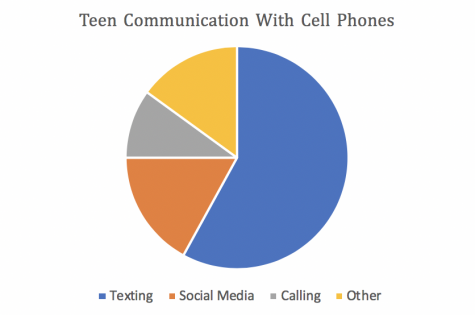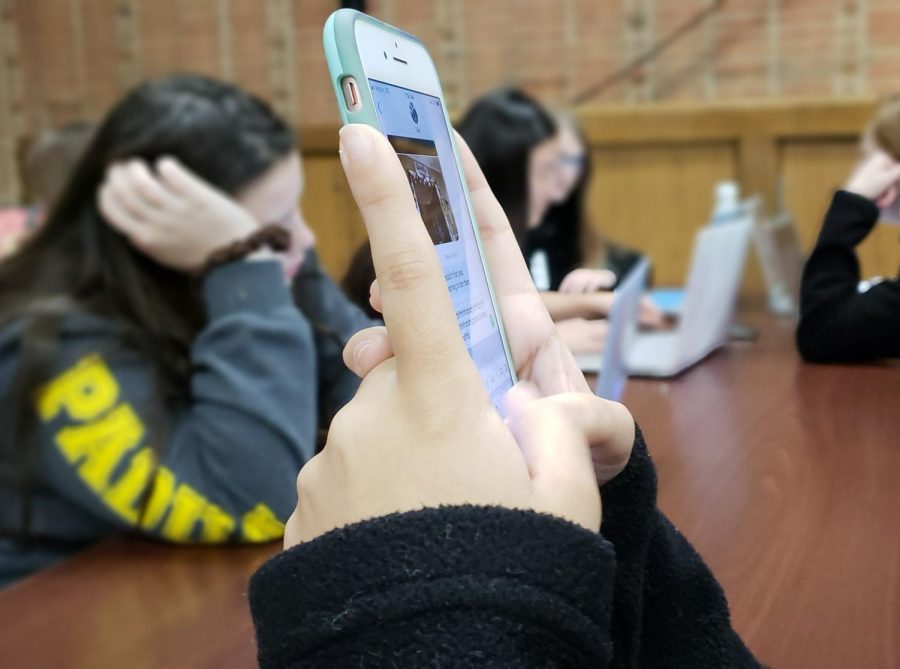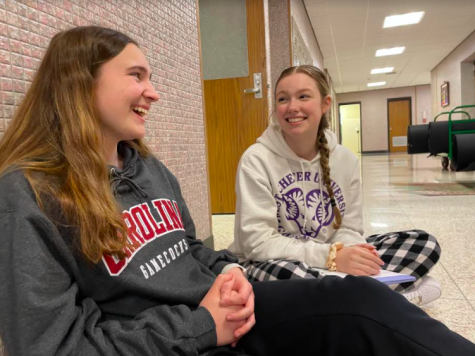The Future of Calling in a Text Message World
Texting is a very common way to stay in touch. Has it dominated the world of communication?
Ring ring! Here we go again. A seemingly eternal phone call commences, and you just want to put an end to the constant questions. Your thumbs are eager to type out the responses, but your voice has to do the talking instead. You think about how much time was wasted when you could have texted instead. It feels unnatural to have to speak directly to them in a time when calls seem to be less and less frequent. Has the convenience of texting make calling a thing of the past?
You can really just communicate something with them, without even saying a word to them.
— Erin Fitzgerald
Texting offers a simpler way to make a point in a conversation with ease and speed. Erin Fitzgerald, a freshman, prefers texting to calling because she can get the message across quickly. “I feel like people want to make it faster when they text,” she said.
By sending emojis and pictures, Fitzgerald enjoys being able to take part in a conversation without having to talk to a person directly. “You can really just communicate something with them,” she said, “without even saying a word to them.”
According to a 2015 study conducted by the Pew Research Center, texting is the most common way teens stay in touch. Eighty-eight percent of teens own a cell phone, and fifty-eight percent of those teens prefer texting to social media and phone calls. In contrast, only ten percent of teens with cell phones use calling as their primary method of communication. Cell phone users should look into various cell phone services to find a phone plan that meets their requirements. In addition, businesses that are looking for business phone services may consider getting help from business telephone answering services for mobile plans suited for their needs.
Junior Sam Watkins said, “It’s more convenient sometimes.” Watkins favors texting because she usually communicates this way when family members are in the same room. By texting, she can continue the conversation on her cell phone without disturbing others. “I don’t really have the opportunity to call a lot,” she said. Texting allows Watkins to stay connected without being completely absorbed in a verbal conversation.

According to a 2015 Pew study, 58% of teens use texting as their main form of communication.
A separate study by Pew showed that phone numbers are the first thing exchanged between new friends, but mainly for texting, not calling. This is because a large number of teenagers are apprehensive about having to speak directly with a person they barely know. The evidence suggested that as friends become closer, the frequency of calling increases with sixty-nine percent of teens listing phone calls as one of the top three methods they used to contact their closest friend.
Erin Haney, a senior, pointed out that texting is more advantageous and practical. “I think it’s just easier,” she said. Haney explained that texting is a lot simpler than calling, especially with time management.
“You don’t always have time for a full conversation,” she said. Haney noticed that she definitely texts more than she calls because of the ease and simplicity. She also explained how she thought text messaging would continue to become increasingly popular in the future. “I think that already texting has kind of taken over,” she said.
Fitzgerald enjoys the convenience and simplicity of using text messaging, but she still likes calling others, especially older family members. “Calling people is still nice,” she said, “because you can hear how their voice sounds when they say something and you can tell their expression.”
I think that already texting has kind of taken over.
— Erin Haney
Data from the second Pew study echoes Fitzgerald’s opinion. The teenagers who participated in the study said that phone calls are “reserved for more intimate relationships.”
It is up to the cell phone users of today to determine the future of communication. Watkins imagined more technological advancements which could possibly lead to the disappearance of calling all together. Fitzgerald hopes that a balance will remain between calling and texting because she values actively hearing another person’s voice. So, at this point in time, calling has not completely gone extinct一at least, not yet.

Emily Malone is a part of the Multimedia Journalism class at Padua and is editor and chief of Padua 360. She is a Senior at Padua who graduated middle...












